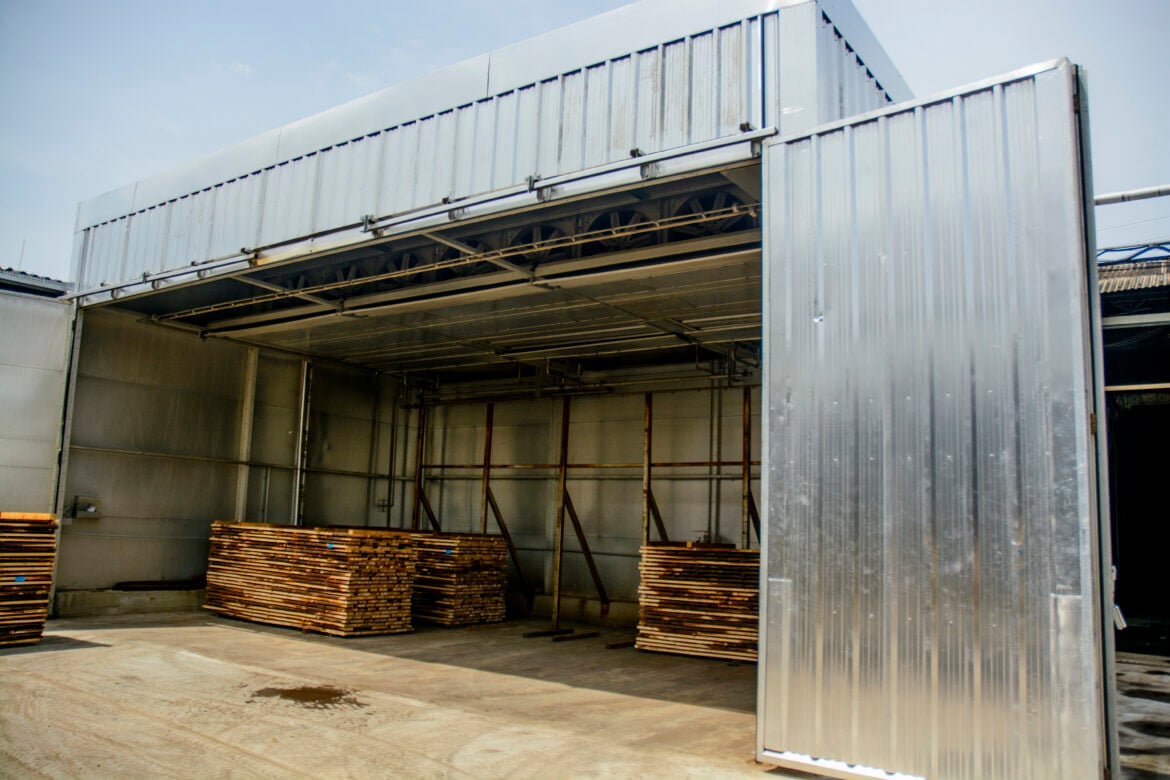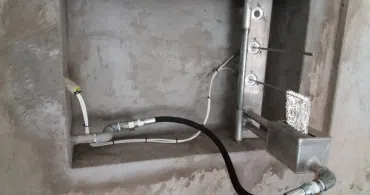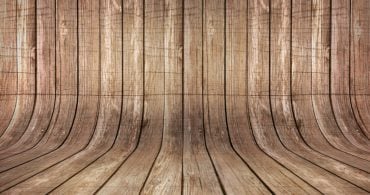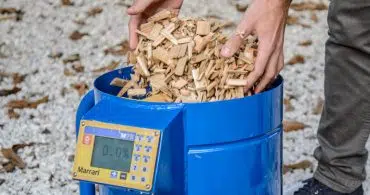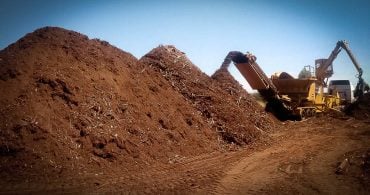In order to understand how to dry wood, it is important to know several factors of how it is composed and how it behaves. Quite different from other materials like concrete or steel, whose particle disposition tends towards uniformity, wood is an extremely heterogeneous material and comes from something that until then was alive and dynamic. The development of plants is directly related to the disposition and movement of water between roots and leaves, as water is the means of transporting the nutrients necessary for their growth. Below, the figure shows examples of homogeneous concrete and steel microstructures and the heterogeneity in the microstructure or wood anatomy.
The amount of water in the wood can vary a lot, depending on the species, age, climatic conditions in which the plant grew, climatic conditions where the piece is and is stored, etc. Drying is a way of standardizing the moisture in the wood and, consequently, guaranteeing the quality of the material. This provision ensures greater ease in the transformation process, control of the mass transported and traded and avoids problems of biodegradation and stability in the future use of wood – whether the final product is solid or transformed into panels, paper, biomass or combined with other materials. One could briefly list the main reasons why drying is essential: Dimensional stability When freshly cut, the wood begins to dry naturally until it is in balance with the environment in which it finds itself. In a drying process, the material first eliminates the free water that remains stored in the intricacies, channels and empty spaces of the cells. After a certain moment, the wood also begins to eliminate the water found in the cell walls and this phenomenon is accompanied by contraction of the piece. The purpose of drying is to control this movement. Within the possibilities of the industrial process and knowing the environmental conditions of the part’s destination, such contraction is anticipated and it is ensured that the movement in extremities, furniture, connections and fittings is negligible and does not compromise the final project. Once dimensional stability is not conditioned by drying, defects such as cracks and warping are common; often decisive for the disposal of the workpieces.
Elisa Pizzaia Goltz Industrial Wood Engineer (UFPR, 2014) Master in Forestry Engineering (UFPR, 2018) Quality / technical manager of the Umilab laboratory at Marrari Automação

